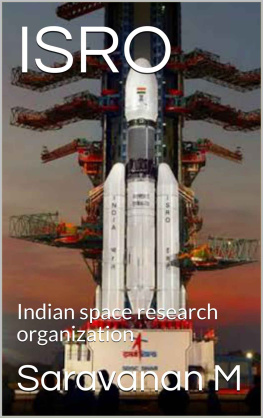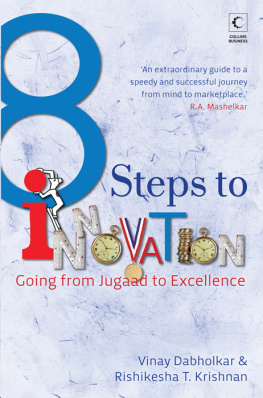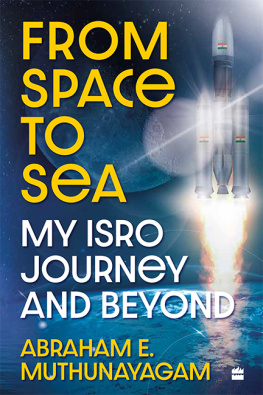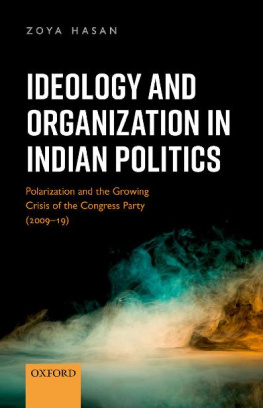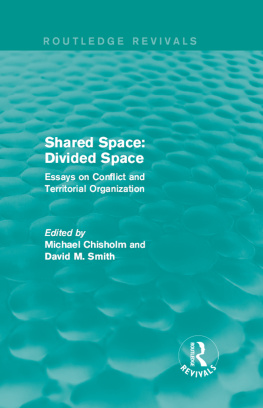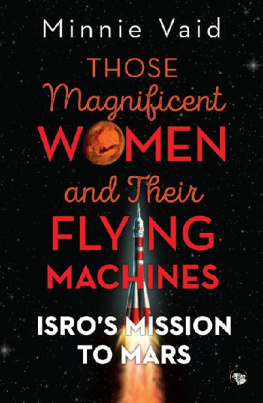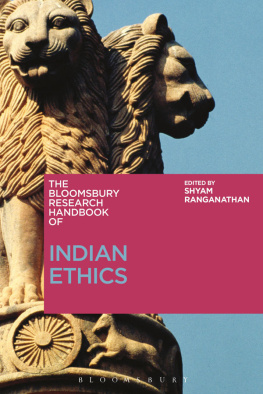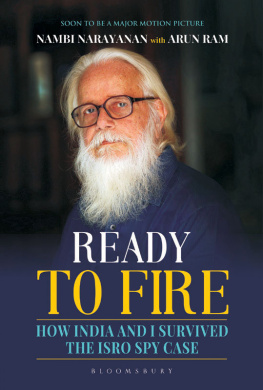Saravanan M - ISRO: Indian space research organization
Here you can read online Saravanan M - ISRO: Indian space research organization full text of the book (entire story) in english for free. Download pdf and epub, get meaning, cover and reviews about this ebook. year: 2019, genre: Politics. Description of the work, (preface) as well as reviews are available. Best literature library LitArk.com created for fans of good reading and offers a wide selection of genres:
Romance novel
Science fiction
Adventure
Detective
Science
History
Home and family
Prose
Art
Politics
Computer
Non-fiction
Religion
Business
Children
Humor
Choose a favorite category and find really read worthwhile books. Enjoy immersion in the world of imagination, feel the emotions of the characters or learn something new for yourself, make an fascinating discovery.
- Book:ISRO: Indian space research organization
- Author:
- Genre:
- Year:2019
- Rating:5 / 5
- Favourites:Add to favourites
- Your mark:
- 100
- 1
- 2
- 3
- 4
- 5
ISRO: Indian space research organization: summary, description and annotation
We offer to read an annotation, description, summary or preface (depends on what the author of the book "ISRO: Indian space research organization" wrote himself). If you haven't found the necessary information about the book — write in the comments, we will try to find it.
ISRO: Indian space research organization — read online for free the complete book (whole text) full work
Below is the text of the book, divided by pages. System saving the place of the last page read, allows you to conveniently read the book "ISRO: Indian space research organization" online for free, without having to search again every time where you left off. Put a bookmark, and you can go to the page where you finished reading at any time.
Font size:
Interval:
Bookmark:
ISRO
Indian Space Research Organization
It is the first National Space Agency of India. ISRO was created in 1969 with its headquarters in Bangalore. There are currently 16,000 employees in ISRO. It is implemented at a cost of approximately 41 billion rupees. Q to ISRO, which operates under the direct supervision of the Indian Space Department. Lord Shiva is the leader.

ISRO is the sixth largest space exploration center in the world. Its main purpose is to explore developments in aerospace technology and use them for the benefit of the nation.ISRO has seen many successes since its founding. In 1975, India's first satellite, Aryabhata, was set up by ISRO and implemented by the Soviet Union. The first satellite, the Rohini, was launched in 1980 by a missile built in India (SLLV-3). Subsequently, satellites can be launched in terminal orbit, such as the Terminal Satellite Missile (PSLV) and Earth orbit. S. L. V designed two missiles. ISRO has launched several telecommunications satellites and terrestrial satellites with these missiles. In 2008, Chandrayaan-1 was India's first trip to the moon in 2008.
Over the past years, ISRO has been performing aerospace related functions for Indian customers as well as foreign customers. He uses his missiles and missiles to launch his satellite. Future plans include upgrading the Earth Satellite Missile (GSLV) and building the entirety of Indian objects, manned space missions, and the implementation of several moon intelligences and planetary instruments. The country has centers that focus on its various tasks and research. Collaborates with the International Space Society on a number of multilateral and multilateral agreements.
Objective:-
The mission of the ISRO (Indian Space Research Center) is to fulfill the tasks of the nation by creating space applications and applications.
Launch period:-
The history of space exploration in India can be traced back to the work of scientist Sisir Kumar Mitra in Kolkata in the 1920s; Mitra performed experiments to analyze the ionosphere through ground-based radio waves. Later, Indian scientists c. V. Raman and the Magnath saga have provided scientific principles that are useful for aeronautics. However, there has been concerted research in the field since 1945. Two Indian scientists led such systematic research: Vikram Sarabhai - founder of the Physical Research Laboratory in Ahmedabad - and Homi Jehangir Baba, founder of the Tata Fundamental Research Institute in 1945. Initially in the space industry, experiments were conducted on cosmic radiation, high-speed and airborne test equipment, particle tests in the Kolar Mines, and high atmosphere. Incorporated case studies in research labs, universities and private places.
The study was backed by Omi Baba, who took over as the Secretary to the newly created Department of Nuclear Power in the Government of India in 1950.The Department of Atomic Energy has funded space research across India. Started at Colaba in 1823, the Earth's magnetic field is being imaged. In astronomy studies, valuable data have been collected. Uttar Pradesh State Aeronautics Center was established in 195. The Rangpur Astronomy Center was established at Osmania University in Hyderabad, Andhra Pradesh in 1957.Both centers were run by the United States Technical Assistance and Science Partnership.Indian Prime Minister Savarkarlal Nehru's role as a technology proponent for the development of the aerospace industry and the successful launch of the Soviet Union in 1957 by the Soviet Union, prompted other countries to conduct space exploration. The Indian National Space Research Group (INCOSPAR) was formed in 1962 under the leadership of Vikram Sarabhai. Afro was founded in 1969 as a replacement for the group.
Missile block:-
For geopolitical and economical reasons, India was driven to produce its own missiles in the 1960s and 1970s. Plans to design and build satellite missiles began to emerge in the 1980s after the successful launch of probe rockets in the 1960s and early 70s. A full framework for support for these has also been developed. [6] SLV-3 is working on upgrading Terminal Satellite Missile (PSLV) and Geostationary Satellite Missile (GSLV) technologies in the wake of advanced satellite missiles.
Satellite Missile (SLV):-
Its English abbreviation, the SLV or SLV-3, is a four-stage solid fuel light missile. Designed for climbing 500km and carrying 40kg. [7] The first Avel was held in 1979, twice in the following year, and the final in 1983. Two of these four were successful.
Advanced Satellite Missile (ASLV):-
The missile is a five-level solid-fueled fuel; This could launch a 150 kg satellite into low Earth orbit. Its design was based on the SLV. The first Avell occurred in 1987 and the three Avels in 1988,1992,1994; Only two airwaves were hit.
Terminal Satellite Missile (PSLV):-
B. The terminal satellite missile, widely known by the English abbreviation SLV, is an irreplaceable (missile) launcher designed to launch Indian satellite satellites into solar fusion orbits. Previously, these satellites had been launched from Russia. These missiles can launch small sub-planes into a geostationary orbit. The missile has been operated by 30 spacecraft (14 Indian spacecraft and 16 foreign spacecraft). In April 2008, it successfully launched 10 subscales in a single launch, breaking the previous record.
On July 15, 2011, the PSLV successfully completed its 18th launch. Of the 19 missions, only one failed since September 1993.
Geostationary Satellite Missile (GSLV):-
GSLV is a Delta-II type satellite launch cell. It is an irreversible system (a lossless launch system). The program was launched to launch Insat-type satellites into the Earth's orbit and reduce the need to seek foreign orbitals.
One setback for this project was the failure of the GSLV control system to carry the GSAT-5B on December 25, 2010, and then safely explode.
Geodetic Satellite Missile Mark-III (GSLV III):-
The Geostationary Satellite Missile Mark-III is a pre-existing spacecraft. The plan is to launch heavy satellites into the Earth's orbit. This is the g. S. L. Although V is the next generation, its design does not stick to it. Its first launch was in 2012 and has been run twice. It is currently in use status. He plans to use this spacecraft for India's manned space program.
Reusable missile:-
ISRO is working on designing a Reusable Launch Vehicle to reduce space flight costs. Initial testing for this was announced in the second quarter of 2015.
Earth-viewing and telecommunication satellites:-
India's first satellite, Aryabhata, launched by the Soviet Union on April 19, 1975. This was followed by the launch and launch of Rohini satellites in India. At present, IFRO operates a variety of terrestrial satellites.
The Insat series:-
The Indian National Satellite Module Project, popularly known as INSAT, is a series of multipurpose geostationary satellites. It is intended for telecommunications, sound / light transmission, meteorology and search-and-rescue purposes. Launched in 1983, the project is the largest domestic telecommunications company in the Asia-Pacific region. It is a joint venture of the Government of India's Department of Space, Telecommunication, Indian Meteorology and All India Radio and Doordarshan; The INSAT Coordination Committee has been formed under the aegis of Secretaries of State to coordinate these activities.
Indian Communication Satellite Series:-
Indian Remote Satellites (IRS) is a geostationary satellite series designed, built, launched and operated by ISRO. This provides telecommunication services to the country. It is the largest philanthropic subgroup in the world for civilian use. Initially these were labeled 1 (A, B, C, D), but in recent years they have been named (OceanSat, Cartosat, ResourceSat).
Next pageFont size:
Interval:
Bookmark:
Similar books «ISRO: Indian space research organization»
Look at similar books to ISRO: Indian space research organization. We have selected literature similar in name and meaning in the hope of providing readers with more options to find new, interesting, not yet read works.
Discussion, reviews of the book ISRO: Indian space research organization and just readers' own opinions. Leave your comments, write what you think about the work, its meaning or the main characters. Specify what exactly you liked and what you didn't like, and why you think so.

